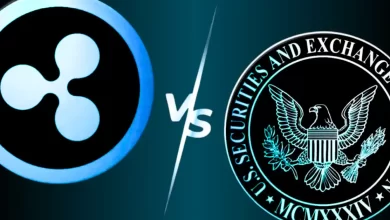Frax Finance to retire algorithmic backing amid stablecoin crackdown

The community of decentralized finance stablecoin protocol Frax Finance has voted to fully collateralize its native stablecoin Frax (FRAX), marking an end to the algorithmic backing of the protocol.
The FIP-188 governance proposal — which would change the collateralization model of FRAX — initially posted on Feb. 15 has now reached a quorum with 98% voting in favor, according to a snapshot on Feb. 23 .
“The time has come for Frax to gradually remove the algorithmic backing of the protocol,” the proposal read.
Near unanimous vote to move $frax to 100% CR over time.
Seems like @fraxfinance serious about making it clear it’s a stable worth holding with no incentive and completely backed with exogenous collateral.
Will be interesting to see it scale$fxs https://t.co/fSQXpmsge3
— 0xChaos (@0xCha0s) February 23, 2023
It explained that the original protocol included a “variable collateral ratio” that adjusted based on the market demand of the stablecoin. The market would dictate how much collateral was required for each FRAX to equal one United States dollar.
The hybrid model resulted in the stablecoin being 80% backed by crypto asset collateral and partially stabilized algorithmically. This was achieved by the minting and burning of its governance token, FXS, which has surged 12% over the past 12 hours.
Frax is the industry’s fifth-largest stablecoin with a market capitalization of just over $1 billion.
Following the implementation of the proposal, the protocol will not mint any more FXS to increase the collateral ratio and token supply.
“To be clear, this proposal does not rely on minting any FXS to achieve the 100% CR.”
It plans to retain protocol revenue to fund the increased collateral ratio, which includes pausing FXS buybacks.
Related: SEC enforcement against Kraken opens doors for Lido, Frax and Rocket Pool
It will also authorize up to $3 million per month in Frax Ether (frxETH) purchases to increase the collateral ratio. frxETH behaves similarly to a stablecoin but is pegged to Ether (ETH) instead. It facilitates the transfer of Ether liquidity within the Frax ecosystem.
DeFiLlama recently reported on the growth of frxETH over the past month.
FraxETH grew by 46.33% over the past month and now has over 100k ETH tokens locked pic.twitter.com/5NxhKnTHUt
— DefiLlama.com (@DefiLlama) February 20, 2023
The move comes amid what appears to be a wider crackdown on stablecoins in the wake of last year’s catastrophic Terra/Luna collapse.
On Feb. 22, the Canadian Securities Administrators published a long list of new requirements for crypto companies and stablecoin issuers wanting to remain legally compliant in the country.
Included on that list were strict rules for stablecoin trading and a prohibition on algorithmic or non-fiat-backed stablecoins.





